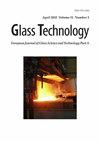Government by Algorithm: Artificial Intelligence in Federal Administrative Agencies, a Case of USA
IF 0.3
4区 材料科学
Q4 MATERIALS SCIENCE, CERAMICS
Glass Technology-European Journal of Glass Science and Technology Part a
Pub Date : 2021-01-03
DOI:10.47672/EJT.641
引用次数: 1
Abstract
The report gives a presents use of artificial intelligence in few administrative agencies. In-depth thematic analysis of some institution, have been conducted to review the current trends. In thematic analysis, 12 institutions have been selected and described the details of the institutions using artificial intelligence in different departments. These analyses yielded five major findings. First, the government has a wide application of Artificial Intelligence toolkit traversing the federal administrative and state. Almost half of the federal agencies evaluated (45%) has used AI and associated machine learning (ML) tools. Also, AI tools are already enhancing agency strategies in the full span of governance responsibilities, such as keeping regulatory assignments bordering on market efficiency, safety in workplace, health care, and protection of the environmental, protecting the privileges and benefits of the government ranging from intellectual properties to disability, accessing, verifying and analyzing all risks to public safety and health, Extracting essential data from the data stream of government including complaints by consumer and the communicating with citizens on their rights, welfare, asylum seeking and business ownership. AI toolkit owned by government span the complete scope of Artificial Intelligence techniques, ranging from conventional machine learning to deep learning including natural language and image data. Irrespective of huge acceptance of AI, much still has to be done in this area by the government. Recommendations also discussed at the end.算法政府:人工智能在美国联邦行政机构中的应用
该报告给出了人工智能在少数行政机构中的使用情况。一些机构进行了深入的专题分析,对当前的趋势进行了回顾。在专题分析中,选取了12家机构,并详细描述了这些机构在不同部门使用人工智能的情况。这些分析产生了五个主要发现。首先,政府在联邦行政和州一级广泛应用人工智能工具包。在接受评估的联邦机构中,近一半(45%)使用了人工智能和相关的机器学习(ML)工具。此外,人工智能工具已经在整个治理责任范围内加强了机构战略,例如保持监管任务接近市场效率、工作场所安全、医疗保健和环境保护,保护政府的特权和利益,从知识产权到残疾人,获取、验证和分析公共安全和健康的所有风险,从政府的数据流中提取重要数据,包括消费者的投诉以及与公民就其权利,福利,寻求庇护和企业所有权进行沟通。政府拥有的人工智能工具包涵盖了人工智能技术的全部领域,从传统的机器学习到包括自然语言和图像数据在内的深度学习。尽管人们对人工智能的接受程度很高,但政府在这一领域仍有很多工作要做。最后还讨论了建议。
本文章由计算机程序翻译,如有差异,请以英文原文为准。
求助全文
约1分钟内获得全文
求助全文
来源期刊
CiteScore
0.30
自引率
0.00%
发文量
0
审稿时长
>12 weeks
期刊介绍:
The Journal of the Society of Glass Technology was published between 1917 and 1959. There were four or six issues per year depending on economic circumstances of the Society and the country. Each issue contains Proceedings, Transactions, Abstracts, News and Reviews, and Advertisements, all thesesections were numbered separately. The bound volumes collected these pages into separate sections, dropping the adverts. There is a list of Council members and Officers of the Society and earlier volumes also had lists of personal and company members.
JSGT was divided into Part A Glass Technology and Part B Physics and Chemistry of Glasses in 1960.

 求助内容:
求助内容: 应助结果提醒方式:
应助结果提醒方式:


